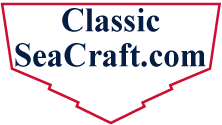 Yamaha engine mount bolt layout
Yamaha engine mount bolt layout
Iíd like to layout and drill the holes in the boat's transom to mount a 2003, 130TXRB Yamaha, but the dimensions in the Yamaha Service manual I have show a two-tenths of an inch difference in the center to center spacing for the horizontal top and bottom sets of holes, and I canít figure out what set of dimensions apply to my engine. The drawing and dimensional chart in the manual shows the dimensions as 12.8" and 9.8" for a saltwater series motor (which mine is not), and 13.0" and 10.0" for a counter rotating motor (which mine is not).
I did a search on a few sites and found a thread that said the standard Yamaha bolt pattern was 12.8" for the top holes and 9.8" for the bottom ones.
Doesn't make sense to me that Yamaha would have different dimensions for saltwater series vs standard motors, let alone left vs. right hand motors, but, just in case, does anyone know what dimensions I should use?
|

